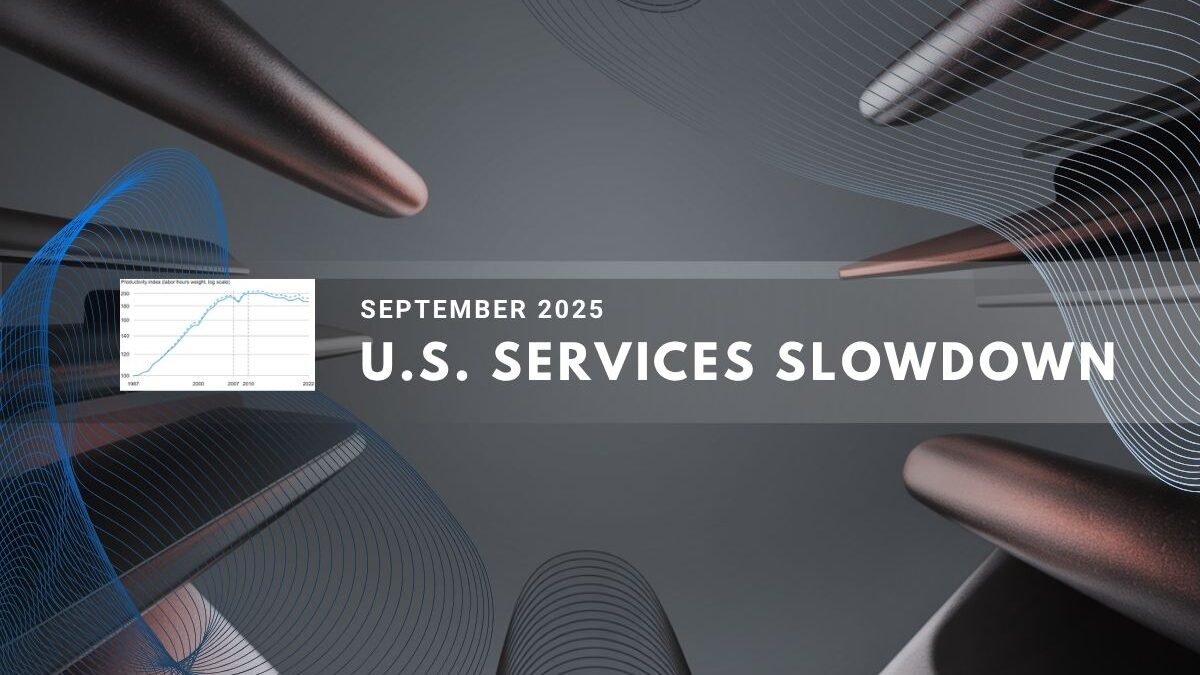Tempe, Arizona, October 3, 2025 — The Institute for Supply Management® (ISM) reports its Services Purchasing Managers Index® (PMI) at 50.0 percent for September, marking the first neutral reading between expansion and contraction since January 2010. A reading above 50.0 signals growth; below 50.0 signals contraction.[1]
Services PMI and Economic Outlook
The Services PMI held at 50.0 percent in September, down from 52.0 percent in August. Historically, this level corresponds to approximately a 0.4-percentage-point annualized increase in real U.S. GDP.[2][3][1]
Sub-Index Trends
| Indicator | Sep 2025 | Aug 2025 | Direction |
|---|---|---|---|
| Services PMI | 50.0 | 52.0 | Neutral |
| Business Activity | 49.9 | 55.0 | Contracting |
| New Orders | 50.4 | 56.0 | Slowing growth |
| Employment | 47.2 | 46.5 | Continued contraction |
| Supplier Deliveries | 52.6 | 50.3 | Slower deliveries |
| Prices | 69.4 | 69.2 | Rising costs |
| Inventories | 47.8 | 53.2 | Contracting |
| Backlog of Orders | 47.3 | 40.4 | Easing contraction |
| Inventory Sentiment | 55.7 | 55.5 | Excess stock |
Business Activity and New Orders
The Business Activity Index slipped into contraction at 49.9 percent, its first below-50 reading since May 2020, as firms noted weaker client demand and lower export volumes. New Orders eased to 50.4 percent, remaining in expansion for 31 of the past 33 months.[1][2]
Employment and Supplier Deliveries
Employment stayed in contraction at 47.2 percent, reflecting hiring freezes and difficulty sourcing qualified staff. Supplier Deliveries rose to 52.6 percent—its highest since February—indicating slower delivery performance amid supply-chain constraints for semiconductors and power components.[4][5][1]
Price Pressures and Inventories
The Prices Index climbed to 69.4 percent, its second-highest since October 2022, marking 10 consecutive months above 60 percent and underscoring sustained inflationary pressures from tariffs and input shortages. Inventories contracted at 47.8 percent as firms reduced stock in anticipation of moderating commodity costs.[6][7][2][1]
Backlogs and Sentiment
Backlog of Orders improved to 47.3 percent from 40.4 percent, its strongest level since April, yet still in contraction. Inventory Sentiment rose to 55.7 percent, evidencing that respondents view their stock levels as too high for the 29th straight month.[8][1]
Industry Performance
Ten of 18 services industries expanded in September, with strongest growth in:
- Accommodation and Food Services
- Health Care and Social Assistance
- Information Services
Seven industries contracted, led by:
- Mining
- Construction
- Real Estate and Rental and Leasing[5][1]
Comparative Data
S&P Global’s US Services PMI registered 54.2 percent in September, down from 54.5 percent in August, reflecting firmer expansion among its panel of 400 firms. TradingEconomics historical data show the ISM series averaging 53.8 percent since 2013, with September’s neutral reading among its weakest on record.[9][4][8]
Expert Commentary
“Tariffs on Asian and South American imports continue to drive cost increases, particularly in food and electronics,” noted one food-service executive. A cloud-services provider commented: “Strong AI demand persists, but component lead times remain stretched.” Housing industry respondents cited elevated material costs and slowed mortgage activity.[10][6][1]
